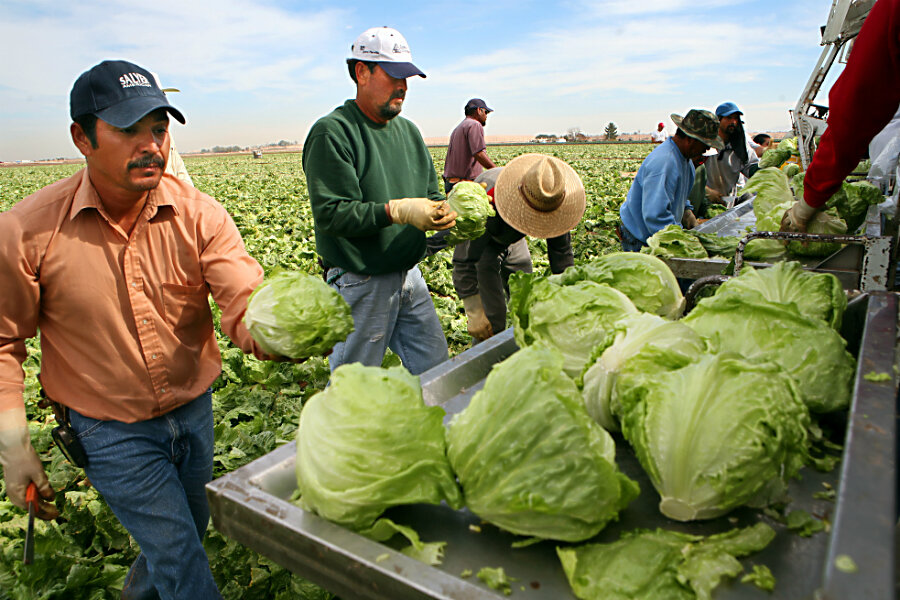How can Americans contribute to a food-waste crackdown?
Loading...
The US Department of Agriculture (USDA) and the Environmental Protection Agency (EPA) have unveiled the first ever national goals for reducing food waste.
The two government agencies plan to partner with the private sector; charitable organizations; faith-based organizations; and local, state, and tribal governments to reduce food loss and waste to improve overall food security and conserve natural resources, according to a news release.
“The United States enjoys the most productive and abundant food supply on earth, but too much of this food goes to waste,” Agriculture Secretary Tom Vilsack said in a statement. “An average family of four leaves more than two million calories, worth nearly $1,500, uneaten each year. Our new reduction goal demonstrates America’s leadership on a global level in getting wholesome food to people who need it, protecting our natural resources, cutting environmental pollution, and promoting innovative approaches for reducing food loss and waste.”
The USDA’s Economic Research Service estimated in 2010 food waste and loss in the United States accounted for about 31 percent – or 133 billion pounds – of the overall food supply available to retailers and consumers. "It's enough to fill the Sears Tower [Willis Tower] 44 times," Vilsack told NPR.
The ambition is to cut the amount of food wasted by households, businesses and the public sector by 50 percent by 2030. It would also prevent greenhouse gases created when food waste decomposes from entering into the atmosphere.
“Let’s feed people, not landfills. By reducing wasted food in landfills, we cut harmful methane emissions that fuel climate change, conserve our natural resources and protect our planet for future generations,” said Gina McCarthy, EPA Administrator, in a statement.
According to the Washington Post, food waste has been growing in the United States since the Second World War, nearly tripling from 12.2 million tons in the 1960s to 35 million tons in 2012.
The newly proposed reductions are voluntary, but Secretary Vilsack told NPR that there are many ways that even voluntary measures could help reduce food waste, such as programs that educate consumers about how to shop and cook in ways that reduce waste.
In the interview, Vilsack likened the anti-food-waste campaign to the anti-littering campaigns of the 1960s and 1970s that shamed people who tossed trash out car windows.
Just as it became culturally unacceptable to litter, Vilsack says, now the goal is to "create a generation of Americans that are sensitive to food waste."
To reduce food waste, in a 2012 paper, the Natural Resources Defense Council advises, “businesses should seize opportunities to streamline their own operations, reduce food losses and save money; and consumers can waste less food by shopping wisely, knowing when food goes bad, buying produce that is perfectly edible even if it’s less cosmetically attractive, cooking only the amount of food they need, and eating their leftovers.”







